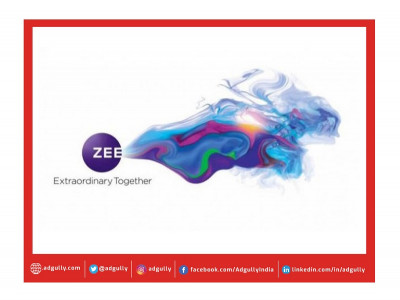COVID-19 to pull down Indian M&E industry’s revenue by 16%: PHD Chamber
Media has been one of the most impacted sectors due to COVID-19 pandemic. Print Media has lost significantly in circulation and also suffered huge ad revenue loss. Electronic Media also lost heavily in ad revenues, Outdoor Media got all orders cancelled owing to no traffic on roads due to lockdown, while the Events business drew a blank as there were no events allowed in this period. All these have been revealed in a research report of PHD Chamber of Commerce & Industry (PHDCCI), titled ‘Outlook of Media and Entertainment Industry in the COVID Scenario’.
The report was submitted to Union Minister for I&B, Prakash Javadekar, by Dr DK Aggarwal, President; Sanjay Aggarwal, Senior Vice President; Mukesh Gupta, Chairman – Media & Entertainment Committee; Saurabh Sanyal, Secretary General; and Yogesh Srivastav, Principal Director, PHDCCI.
The COVID-19 pandemic has caused mass disruptions to the nation’s economy, its trade, industry and the lives of citizens. There is no industry or sector of the economy which has been left unaffected by this wave. As the world has accepted COVID-19 as the new normal, the crisis has also impacted how different forms of media are consumed in the world of today.
According to research conducted by Crisil Ratings, the media and entertainment sector is expected to witness a 16 per cent decline in revenue for FY21, due to falling in advertisement and subscription income. The industry would take a hit of around 18 per cent in revenue from advertisements that account for nearly 45 per cent of total income, while the subscription earning that contributes 55 per cent will be relatively resilient with a likely decline of 14 per cent.
While the Corporate Social Responsibility and Public Awareness Advertisements are still running but at a low pace, overall the industry is expected to have a turnover of around Rs 1.3 lakh crore this fiscal and the ongoing economic slowdown, made worse by the COVID-19 pandemic, is set to pull down the Indian media and entertainment industry's revenue by 16 per cent or Rs 25,000 crore to Rs 1.3 lakh crore this fiscal.
While ad revenue, which correlates strongly with economic growth, will take a hit as India’s GDP growth hurtles towards a multi-decade low this fiscal owing to the extended lockdown to contain the pandemic, it said, adding that weak economic conditions had kept advertisement revenue muted even last fiscal. The overall revenue loss of Rs 25,000 crore for the industry will translate to significantly lower profits for companies despite cost-cutting measures. The overall ad revenue will plummet 18 per cent this fiscal, with the impact varying across segments. In digital, it will continue to grow but at a slower pace.
All the traditional segments like television (TV), print, radio, out-of-home media, and films, will see a significant decline in the advertising revenue. The resilience of the digital segment is driven by the increasing use of devices and applications.
For TV, the impact on ad revenue will also be because of the lack of new content on popular channels and postponement of major sporting events such as the Indian Premier League. For newspapers, longer recovery time for key advertiser-industries such as automobiles, real estate, and e-commerce would keep ad spend muted. Newspapers have faced distribution challenges in certain areas leading to a temporary blip in the circulation revenue. But a sharp fall in box office collections will curtail subscription revenue. Given the sharp reduction in revenues, debt protection metrics will certainly weaken this fiscal for media and entertainment companies. The large ones will surmount the stress given their ample liquidity and strong financials. But smaller players could see a sharp impact on their credit profiles as revenues decline and liquidity gets squeezed. Multiplexes that have had strong credit profiles will see credit pressure aggravating because of the long road to recovery.
With such devastating figures, there is also a ray of hope with Finance Minister Nirmala Sitharaman launching the economic package with its relief measures to boost the MSME sector which has been a ray of hope in these times. According to industry experts, MSMEs are likely to boost with these reliefs and measures and would spend on advertising once their demand and supply are back into place. The MSME which does online and digital advertising will gain a good upliftment from this package.
Overall, in the Media and Entertainment industry, the advertising sector is witnessing a slowdown and downfall. With the coming of this stimulus package, there are some reliefs to this sector as their business will be able to sustain at least.
The way forward
Going forward, the industry will need to re-think various operational and legal aspects of the business, such as timelines, production costs and schedules, legal commitments etc., in order to adjust to the 'new normal' being presented to the world. OTT platforms, where a large chunk of the content library comprises of acquired content, or is dependent on partnerships with third parties, may have to think of innovative ways of updating their existing content libraries, given that the production of new content may take much longer than anticipated earlier.
Media companies including production houses will also need to find ways of increasing their use and reliance on technology. In addition, contractual arrangements and legal provisions will need to be re-evaluated wherever possible, so as to appropriately account for such risks occurring in future and mitigate losses.
However, on the bright side, the demand for home consumption mediums including digital streaming services, which are hugely popular since even before the pandemic, is likely to increase even further. In the long run, this may in fact benefit subscription-based services which may be able to penetrate even further amongst viewers.
Given a rise in demand for content and increasing viewership, and the halts in production of new content, existing content is likely to become more valuable, and in time may increase competition not only for existing film and television libraries, but also for all new content. To meet the demand for content, the industry may also see increased partnerships between domestic and international media companies, leading to a rise in acquisition of foreign language content, and distribution of localised versions of such foreign content to suit different segments of the domestic audience.
The allowance of 100% FDI in the Media and Entertainment industry and an effective hand holding from the government will definitely keep the show of the Indian Media and Entertainment industry going on.

















Share
Facebook
YouTube
Tweet
Twitter
LinkedIn